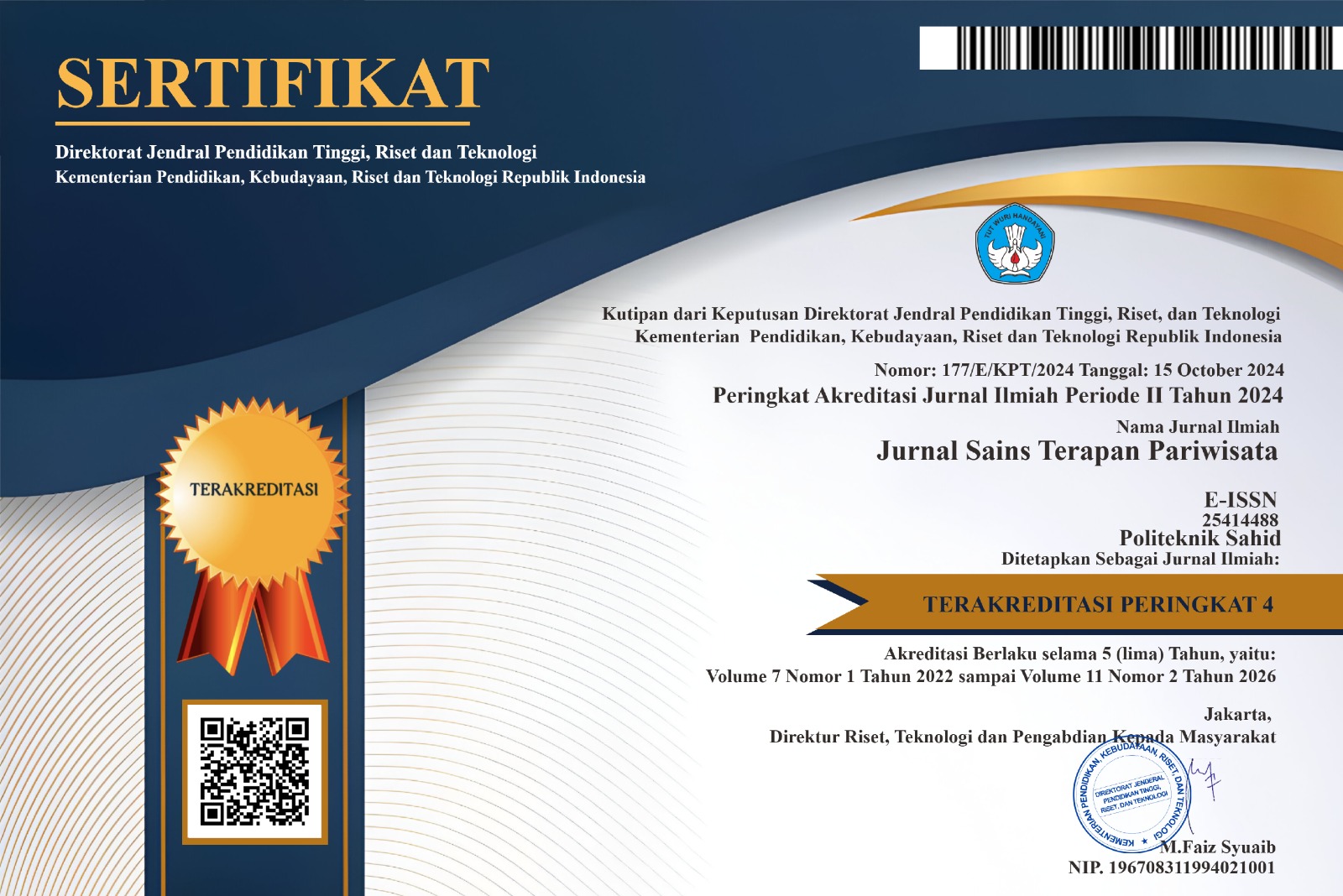Pemanfaatan Tepung Tempe Dalam Pembuatan Lapis Legit
Keywords:
tempeh, tempeh flour, lapis legitAbstract
Tempeh is a very popular traditional soybean fermented product. This product is consumed by all levels of society as a source of protein. Tempeh used to be considered as inferior food, poor people’s food and very traditional. But the tempeh’s decay process that occurs in 2-3 days makes storage capability of tempeh does not last long. This is caused by a further fermentation process. Therefore, a treatment is needed to extend its shelf life. There is a derivative product which is made from tempeh flour which is then developed into processed products from tempeh flour. As an effort to reduce the import of flour, it is necessary to conduct several studies on the use of other food as an alternative substitute for food, one of which is tempeh flour which can be produced regularly to facilitate people to get nutritional intake from processed tempeh flour. Another ingredient that can be used as a substitute for wheat flour is tempeh flour. Tempeh flour can produce several products such as various kinds of cakes or traditional cake products, one of which is lapis legit (legit layer). Its soft texture and fragrant aroma, is a special attraction for this culinary. The main ingredients in making layer cakes are flour, butter, sugar and egg yolks. The purpose of this study was to determine differences in the attributes of sensory quality and differences in preferences in making legit layers. The experimental design used in making legit layer of tempeh flour was a completely randomized design (CRD) with 5 research formulations with 1 repetition, with different tempe flour concentrations of 0%, 25%, 50%, 75%, and 100%. For the analysis of hedonic test / favorite test and hedonic quality test data, the author used the ANOVA analysis method with Duncan. After knowing the results of data analysis, the best samples will continue to determine the selling price.
Downloads
Published
How to Cite
Issue
Section
License
Copyright (c) 2022 Ramon Hurdawaty, Thiara Zakiyana Rahman

This work is licensed under a Creative Commons Attribution 4.0 International License.
























